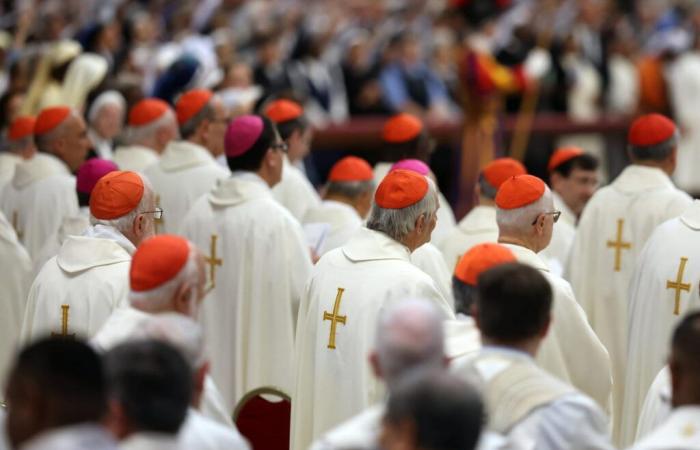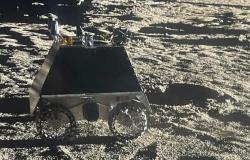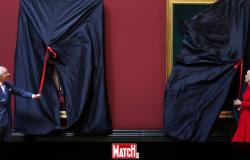The date of the conclave is known, but the one to which the new pope will be presented at the Balcon de la Basiliques Saint-Pierre is still a mystery. Until then, the cardinals will have to follow a long and precise protocol.
Decisive week at the Vatican: the election of the new pope will begin. The college of hearts will meet on Wednesday May 7, 2025 for the famous conclave responsible for electing the future sovereign pontiff. Respecting tradition, the conclave will start 17 days after the death of Pope Francis, who died on April 21. For this solemn moment, the cardinals will come together in camera in the Sistine Chapel to make successive votes until a pope is appointed. Only cardinals voters, those aged under the age of 80 the day when the Holy See has become vacant, are allowed to vote. Two of these cardinals announced that they did not participate in the conclave for health reasons. They will therefore be 133 religious to choose the successor of Pope Francis, who will have to be elected by the majority of two thirds of the Cardinals College.
Among these cardinals, many have joined the college during the pontificate of Pope Francis. Nominations which made the religious assembly more representative and diversified: if 53 Cardinals are European, of which many Italians, 23 Cardinals come from Asia and as much are from Latin America, 18 religious are African and 14 from North America, finally 4 cardinals of Oceania completes the list of voters of the Pope. If religious with progressive ideas, heirs to that of Pope Francis are among the cardinals voters, others follow more conservative ideologies. Specificities that will inevitably influence the choice of the new Pope which will necessarily be chosen from the cardinals. Theoretically, all baptized men can claim the papacy, but in practice the Pope has been chosen from the cardinals since 1379.
How does the conclave go?
Mass and oath
Conclave day begins with the special mass “Pro Eligendo Papа” chaired by the dean of the cardinals, Giovanni Re, in the Saint-Pierre basilica. The cardinals then meet in the Pauline chapel to start the procession towards the Sistine chapel, singing the song “Veni Creator”. Once in the chapel where the camera will be held, the cardinals voters take an oath of discretion then the masters of the papal liturgical celebrations give the “extra omnes” order which translates into “those who are too much leave”. Conclave votes can then start.
The vote
Cardinals can vote up to four times a day, twice in the morning and twice in the afternoon. For each ballot, nine cardinals are chosen to monitor the vote: three scanners to supervise the vote, three nurses to collect the votes of the sick cardinals selected in room and three revisers to check the results. The cardinals receive a bulletin on which they must secretly register the Pope whom they wish to see elected and will slide their bulletin in turn by order of seniority in the ballot box.
The count
When all the cardinals voted, the scrupoters ensure that the number of bulletins corresponds to the number of voters. If there is an error, the bulletins are burned and the vote must start again. The Revisers then note the result: the first opens the bulletin, the second note the name inscribed and the third bed aloud the name registered. The bulletins are put on as the counting then gathered around a wire to be burned. In the headquarters of the Sistine Chapel. The outcome of the vote is then known and communicated to the rest of the world by the color of the smoke that rises: black smoke means that no pope has been elected, white smoke that the conclave has agreed on the name of a new pontiff sovereign. Smoke signals are generally expected around 12 noon and around 7 p.m., but they can be shifted if the first voting in mid-day ends.
Nomination du pope ou we pope
After the elevation of white smoke, the cardinals who have no right to attend the vote return to the Sistine Chapel and the dean of the Cardinals College asks the Pope Elected if he accepts his new function and what a papal name he wishes to take. The new pope goes to a room called “room of tears” in which he puts on his pope outfit. A prayer is recited and the cardinals pay tribute to him. Meanwhile, Cardinal Protodiacre pronounces the “Habemus Papam” at the Balcony of the Saint-Pierre Basilica: “Annintio Vobis Gaudium Magnum; Habémus Papam!”, Or “I announce a great joy; we have a pope!” in French. The new pope then advances to the balcony to give his first blessing Urbi and Ordi (which means “to the city and to the world”).
How many time can the conclave last?
The conclave has no predetermined duration, it can be long as short. From the beginning of the closed door, the cardinals can proceed up to four votes per day for four days. If no vote has led, religious can suspend the conclave for times of prayer, reflection and informal discussions. The votes resume on the sixth day and for seven consecutive elections as much as possible before a new break. In the event of dead ends, cardinals can decide to limit the vote to the names of the two people who came to the top of the last election. In which case, the absolute majority of the voices is enough to be elected.
The longest conclave lasted more than two years between 1268 and 1271, the shortest lasted a few hours in 1503. The election of Pope Benoît XVI in 2005 was one of the shortest since it lasted only two days like that of Pope Francis in 2013. Since the 1900s, no conclave has lasted more than a week, it could follow this trend. Especially since several cardinals expect a short conclave, like the Salvadoral Cardinal Gregorio Rosa Chavez who affirms in the columns of the Corriere Della will be that it will not be a long conclave: “I think it will be a maximum of three days”.
The duration of the conclave can be accelerated by the informal discussions which are held between the cardinals during the daily meetings they have between the funeral of the deceased pope and the day before the conclave. From April 28 to May 6, the cardinals participate every day in congregations during which the profile of the new Pope and the management to be given to the Church are discussed. Exchanges that give a direction for the election of the sovereign pontiff.
09:59 – How Pope Francis Modify the conclave before his death
The conclave responsible for appointing the new pope is very different from the one who had elected Pope Francis in 2013. Modifications initiated by the previous sovereign Pontiff himself since the Holy Father created 163 cardinals during his pontificate, 108 of which are among the 135 cardinals voters (14 died and 41 others have 80 years old and can no longer participate in the conclave). With these appointments, the Pope was able to modify the center of gravity of the college of cardinals as much as he named many religious from the “peripheries” and not of the large places of the European Catholic Church or the Roman Curia. Consequence: 53 of the 135 cardinals voters are European, against 60 out of 117 in 2013. A new composition which can review the balances and influence the appointment of the next Pope.
Note that more diversities within Conclave, makes that all cardinals do not know each other and must meet and gauge themselves before agreeing on a name, at least for two thirds of the conclave.
05/05/25 – 16:12 – Two Cardinals meetings organized this Monday
Between the funeral of Pope Francis and on Saturday May 3, the cardinals gathered nine times for the congregations preceding the conclave. Another of these meetings took place this Monday morning and the religious asked that an additional meeting be organized this afternoon at 5 p.m. Each meeting is an opportunity for all the cardinals present, those who are authorized to participate in the conclave and the oldest who are kept away from the vote to exchange on the future of the Church and in this case the profile of the future Pope. During these meetings, each participant has five minutes of speaking to defend his ideology and the profile he wishes to see the head of the Vatican, possibly to make his own promotion, but always to convince the rest of the religious assembly.
If these meetings have multiplied, the fact that the cardinals add to the schedule, two other congregations could take place on Tuesday on the eve of the conclave, is perhaps the sign that a consensus is difficult to find and that the appointment of a Pope could be longer and difficult than expected. On the contrary, the multiplication of meetings can be used to accelerate discussions and to fall more quickly on the name of a new pope once the conclave is opened.
05/05/25 – 14:47 – Two days before the conclave, the cardinals arrived in Rome
The 133 cardinals voters who will participate in the conclave and elect the future pope arrived in Rome. If some were already present for several days, the last religious to have joined the Vatican arrived this Monday, May 5. All the cardinals will meet for a dinner on Tuesday evening, on the eve of the conclave. If it is an unofficial step, it is part of the protocol surrounding the conclave.








